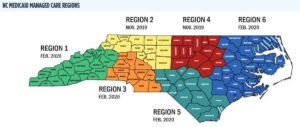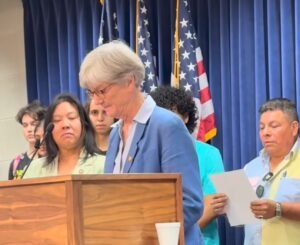North Carolina’s rapid growth has predominantly centered around urban regions such as the Triangle and Charlotte. However, this expansion has not been uniform across the state. Northeastern counties, particularly those with majority Black populations, have faced persistent challenges, including population decline, economic hardship, and adverse health outcomes.
Disparities in Population Growth
Recent data indicates that while counties like Johnston and Brunswick have experienced significant population increases—18.5% and 15%, respectively—many northeastern counties are witnessing a decline. Robeson County, for instance, has seen a notable population decrease, exacerbated by factors such as natural disasters and elevated unemployment rates.
The economic landscape of northeastern North Carolina has historically relied on industries like manufacturing and agriculture. The decline of these sectors has led to job losses and economic stagnation. Halifax and Northampton counties exemplify this trend, experiencing continuous population decline, reduced employment opportunities, negative GDP growth, and higher mortality rates compared to other regions. These counties are among the few in the state designated as having persistent poverty, with over 20% of their populations living below the federal poverty line for more than three decades.
Health disparities further compound the region’s challenges. A report by the North Carolina Department of Health and Human Services highlights significant inequities in health outcomes across various demographics, emphasizing the need for targeted interventions in underserved areas.
Legislative Efforts and Community Initiatives
State Representative Rodney Pierce, representing parts of northeastern North Carolina, has termed the region “Neglected Northeastern North Carolina.” He advocates for policies aimed at revitalizing these communities by addressing systemic issues contributing to economic and social disparities.
Efforts are underway to bridge these gaps. The North Carolina Department of Health and Human Services’ Office of Health Equity is actively working to eliminate health disparities by connecting communities to essential resources and services. Additionally, the East Carolina University Center for Health Disparities focuses on research, education, and community engagement to improve health outcomes in the region.
A Path Forward
Addressing the multifaceted challenges of northeastern North Carolina requires a collaborative approach involving policymakers, community leaders, and residents. By focusing on equitable economic development, enhancing healthcare access, and investing in education and infrastructure, there is potential to reverse the longstanding trends of neglect and foster a more prosperous future for the region.
Stay Informed with Bull City Citizen
For comprehensive coverage of regional developments and in-depth analysis of initiatives impacting northeastern North Carolina, subscribe to the Bull City Citizen Newspaper. Our dedicated team is committed to delivering unbiased and insightful reporting on the issues that matter to you.
Note: This article is based on information available as of February 26, 2025. Subsequent developments may have occurred since this date.













